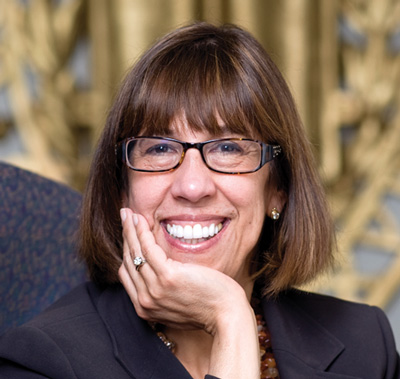
Lately, the media are full of alarming accounts of college closures, beginning a few years ago with Sweet Briar in Virginia and continuing recently with Green Mountain in Vermont. Many predict more closures ahead, particularly in the Midwest and the Northeast, where the trends show a significant decline in college-bound youth. Not surprisingly, these predictions prompt our Knox alumni to ask if the same fate lies in store for Knox.
The media accounts don’t always differentiate between nonprofit schools like Knox and for-profit, career-focused institutions, where the vast majority of closures have occurred. While many predicted that the for-profit sector would be more nimble, it quickly became overcrowded. Some schools, focused on recruiting veterans and low-income students, failed because students were unable to find the promised jobs and defaulted on their loans. (Knox, in contrast has an extremely low default rate, and 95 percent of our graduates begin paying on their loans within five years of graduation.) Ironically, the career focus of many of these for-profit schools also meant their markets shrank as unemployment rates declined.
“
Despite relentless criticisms of the very concept of a liberal arts college, I see the momentum swinging back in our favor, as the pace of technological change now favors graduates with the traditional liberal arts skills of critical thinking, communication, and capacity for independent research and analysis.
Within the nonprofit sector, some schools marketed themselves to a niche that was, ultimately, too small, sometimes designing their entire curricula around a theme, such as sustainability, or around a profession, such as chiropractic or studio art. In addition, many small faith-based institutions have lost enrollment as the number of Americans who identify with a particular religious denomination has fallen off in recent years. Knox, with a broadly based liberal arts curriculum and programs that embrace students from many religious traditions, has maintained a wider base from which to recruit. The small nonprofits that have closed also often had significant vulnerabilities, such as endowments under $10 million (compared to Knox’s $160 million), or enrollments below 200 students, so low that they could not achieve economies of scale (compared to Knox’s 1300-1400 range).
Despite relentless criticisms of the very concept of a liberal arts college, I see the momentum swinging back in our favor, as the pace of technological change now favors graduates with the traditional liberal arts skills of critical thinking, communication, and capacity for independent research and analysis. Knox also anticipated recent demographic changes by significantly expanding its recruiting efforts. While Illinois remains our largest supplier of new students, a sizable number now come from California and Colorado. Beyond the U.S., Knox recruits in more than 50 countries.
That said, the demographics are indeed challenging, creating intense competition for every student, which in turn drives down net tuition revenue. To compensate, we must work hard to control costs, maintain our educational quality, and offer the academic programs and student support services that prospective students and their families expect. And we have to outrun our competition in all those arenas.
How can you help? First, recommend Knox to your friends and family members with college-bound children. Your experiences are the best advertisement possible. Second, give back to the College; a strong tradition of alumni support helps to build our national reputation as well as fund financial aid and scholarships. Finally, come back to campus. You’ll see that our community and our curriculum are as vibrant, relevant, and powerful as ever.
—Teresa Amott